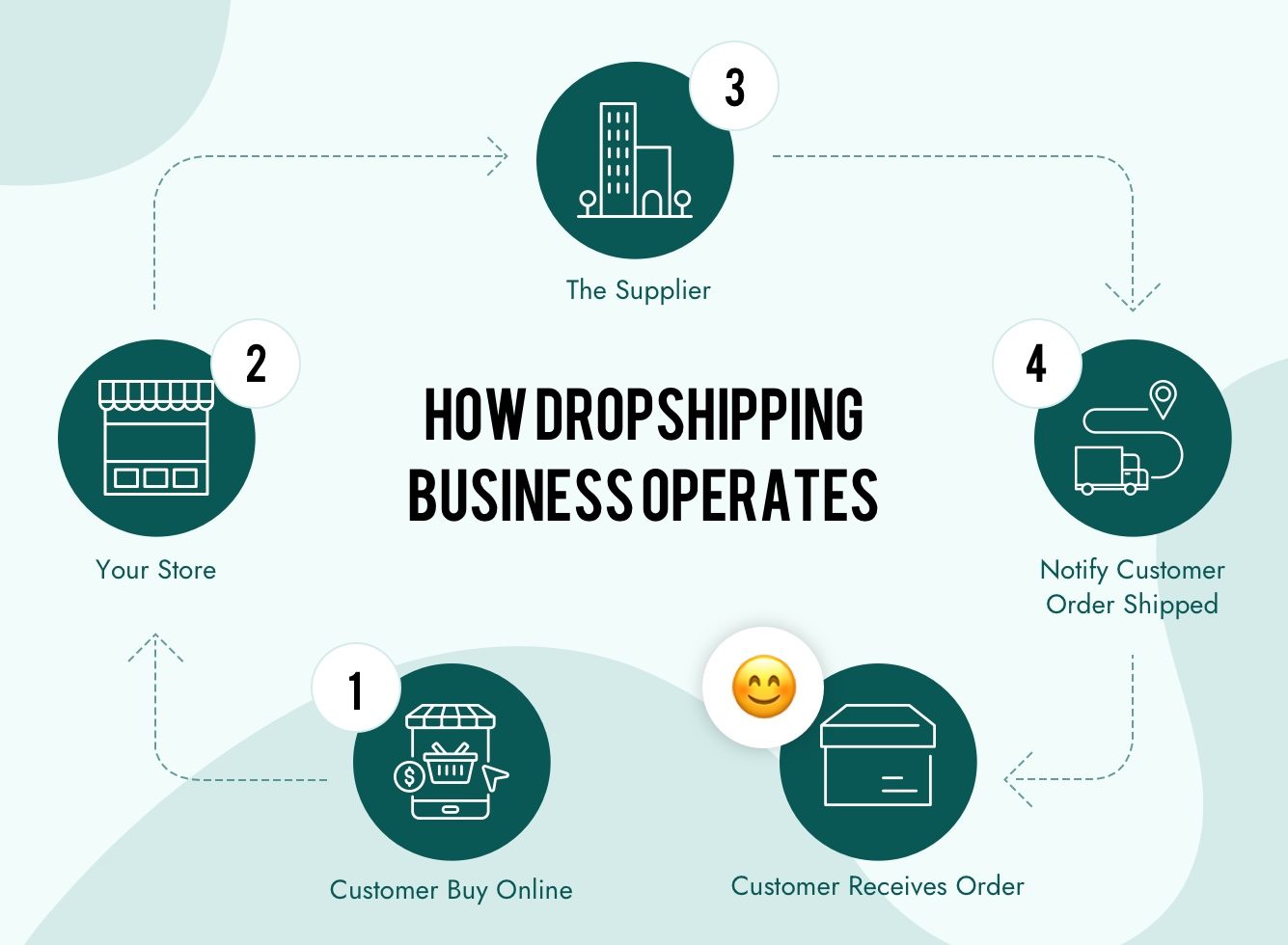In recent years, the world of e-commerce has witnessed a remarkable transformation with the advent of dropshipping websites. This business model has become a popular choice for entrepreneurs seeking to enter the world of online retail. The concept of dropshipping offers an accessible and cost-effective way to start an e-commerce venture without the complexities and risks associated with traditional retail. In this article, we will explore the booming business of dropshipping websites, its key drivers, advantages, and the future of this dynamic industry.
What Is Dropshipping?
Dropshipping is a retail fulfillment method where an online store doesn’t keep the products it sells in stock. Instead, when a store sells a product, it purchases the item from a third-party supplier who then ships it directly to the customer. In essence, the retailer acts as an intermediary, focusing on marketing, customer service, and building their brand, while the supplier handles inventory management and order fulfillment.

The Rise of Dropshipping
The rise of dropshipping websites can be attributed to several key factors:
Low Startup Costs
Traditional brick-and-mortar retail requires substantial capital to buy inventory and manage storage space. Dropshipping eliminates these costs, making it an attractive option for those with limited financial resources. Entrepreneurs can set up an online store with minimal investment, often requiring only a domain name, hosting, and marketing budget.
Diverse Product Selection
Dropshipping offers the flexibility to sell a wide range of products without the burden of maintaining inventory. Retailers can quickly adapt to market trends, add or remove products, and experiment with niche markets. This adaptability enables entrepreneurs to cater to specific customer demands and preferences.
Accessibility
E-commerce platforms like Shopify, WooCommerce, and specialized dropshipping software have made it easy for entrepreneurs to launch and manage their online stores. These platforms provide user-friendly interfaces, customizable templates, and essential tools for inventory management, order tracking, and marketing.
Global Reach
The internet has no geographical limitations, and dropshipping leverages this advantage. Retailers can reach a global audience, expanding their customer base far beyond what traditional retail would allow. With efficient logistics and shipping options, customers can receive products from suppliers located anywhere in the world.
Lower Operational Overhead
Dropshipping eliminates the need for warehousing, packaging, and shipping, which can significantly reduce operational overhead. This allows entrepreneurs to focus on marketing, customer acquisition, and creating an exceptional online shopping experience.

Advantages of Dropshipping
The booming business of dropshipping websites is further fueled by a host of advantages:
Minimal Risk
Since entrepreneurs don’t purchase inventory upfront, there is little financial risk involved. You only buy products when you have already made a sale and received payment from the customer.
Scalability
Dropshipping businesses can be easily scaled up. As demand increases, entrepreneurs can add more products, expand into new markets, and grow their operations without significant capital investments.
Wide Product Range
With access to numerous suppliers, dropshippers can offer an extensive and diverse product catalog, catering to various customer preferences.
Focus on Marketing
Retailers can concentrate on marketing and customer service, enhancing their brand and building strong customer relationships.
Location Independence
One of the most appealing aspects of dropshipping is the ability to operate the business from anywhere with an internet connection. This level of flexibility suits the digital nomad lifestyle and provides freedom for entrepreneurs.
The Future of Dropshipping
As the e-commerce landscape continues to evolve, the dropshipping industry is expected to see continued growth. However, it is essential for entrepreneurs to adapt and innovate to remain competitive. Here are some trends that may shape the future of dropshipping:
Niche Markets
Niche-focused dropshipping stores that cater to specific interests or industries are likely to gain prominence as they provide more targeted and personalized shopping experiences.
Sustainability
Customers are becoming increasingly conscious of the environmental impact of their purchases. Dropshipping businesses that adopt sustainable practices and source eco-friendly products can attract a growing customer base.
Automation
The integration of automation and artificial intelligence in managing inventory, customer support, and marketing tasks will enhance efficiency and streamline operations for dropshippers.

Enhanced Customer Experience
Providing exceptional customer service, fast shipping, and easy returns will remain critical in building trust and loyalty with customers.
In conclusion, the booming business of dropshipping websites is a testament to the transformative power of e-commerce. Entrepreneurs have found a way to thrive in a competitive market with low startup costs, scalability, and an ever-expanding product selection. As the industry continues to evolve, it is essential for dropshippers to stay agile and customer-focused, ultimately shaping the future of online retail. With the right strategies and dedication, dropshipping offers a pathway to e-commerce success in the digital age.








